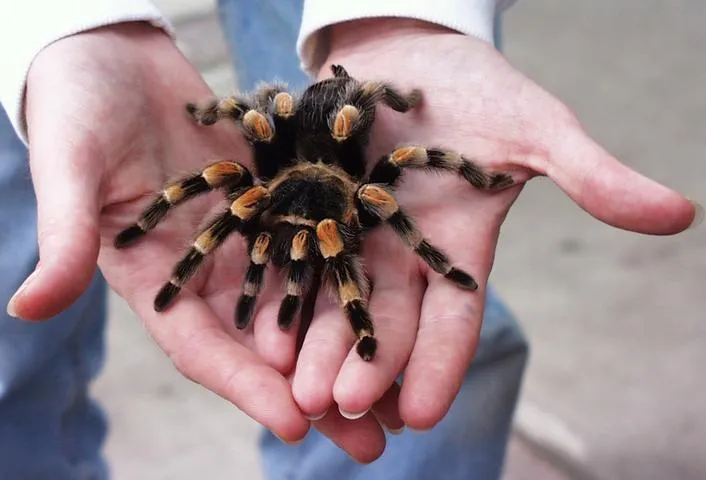Red Knee Tarantula’s Scientific Name [Introduction]
The Mexican Red Knee Tarantula, a captivating creature with striking red and black markings, has become a popular pet among enthusiasts worldwide. Beyond its aesthetic appeal, this tarantula holds a significant place in the arachnid world, boasting a fascinating scientific identity. Understanding the scientific name of this species unlocks a deeper appreciation for its place in the ecosystem and its relationship to other tarantulas. This article dives into the scientific name of the Red Knee Tarantula, unveiling its importance, origin, and the essential facts every enthusiast should know. We will explore the intricacies of biological classification and provide valuable insights for those captivated by these magnificent spiders.
What is the Mexican Red Knee Tarantula
The Mexican Red Knee Tarantula (Brachypelma hamorii) is a terrestrial tarantula native to the Pacific coast of Mexico. Known for its docile temperament and vibrant colors, it is a favorite among tarantula keepers. This species is relatively large, with females reaching a leg span of up to 6 inches. The striking red-orange markings on its leg joints against the black body create a visually stunning contrast. The Red Knee Tarantula is a long-lived species, with females often living for over 20 years, making them a rewarding pet for those willing to provide proper care.
Physical Characteristics of the Red Knee Tarantula
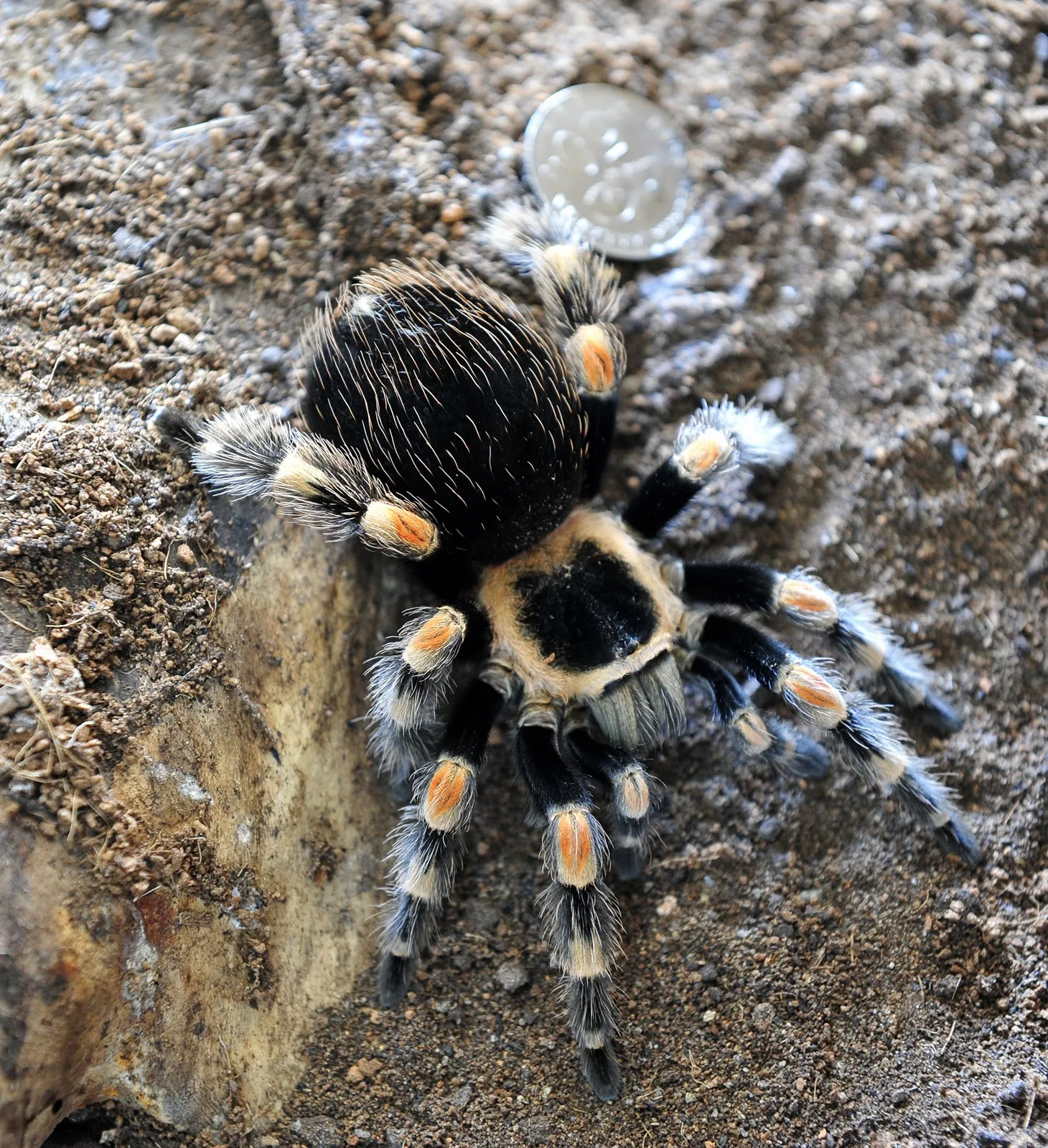
The Red Knee Tarantula is instantly recognizable due to its striking appearance. The most notable feature is the vibrant red-orange coloration on the patella (knee) joints of its legs, contrasting sharply with the black segments of the legs and body. The carapace, the top part of the cephalothorax, is typically a deep brown color. The abdomen is covered in dark hairs, and the overall body is covered with fine setae, giving it a slightly furry appearance. This tarantula possesses two chelicerae, which house the fangs, used for capturing and subduing prey. The overall size of the tarantula makes it a sight to behold, and the coloration is a unique identifier.
Habitat and Natural Range of the Red Knee Tarantula
In the wild, the Red Knee Tarantula is primarily found in the dry scrublands and tropical deciduous forests of the Pacific coast of Mexico. Specifically, they inhabit areas from the states of Colima, Jalisco, and Michoacán. These tarantulas are terrestrial, meaning they live on the ground, and they typically create burrows in the soil or utilize natural shelters like rock crevices or beneath fallen logs. Their habitat is often characterized by a dry climate and sparse vegetation. They are typically nocturnal hunters, emerging from their burrows at night to hunt insects and other small invertebrates. Understanding their natural habitat is crucial for providing proper care in captivity.
Understanding the Scientific Naming System
The scientific naming system, known as binomial nomenclature, provides a standardized way to identify and classify all living organisms. This system, developed by Carl Linnaeus, uses two names: the genus and the species. The genus name comes first and is capitalized, while the species name follows in lowercase. Both names are typically italicized. This system avoids confusion caused by common names, which can vary by region and language. The scientific name gives a clear and universal identification. This method allows scientists worldwide to communicate about a species with precision.
The Genus and Species Explained
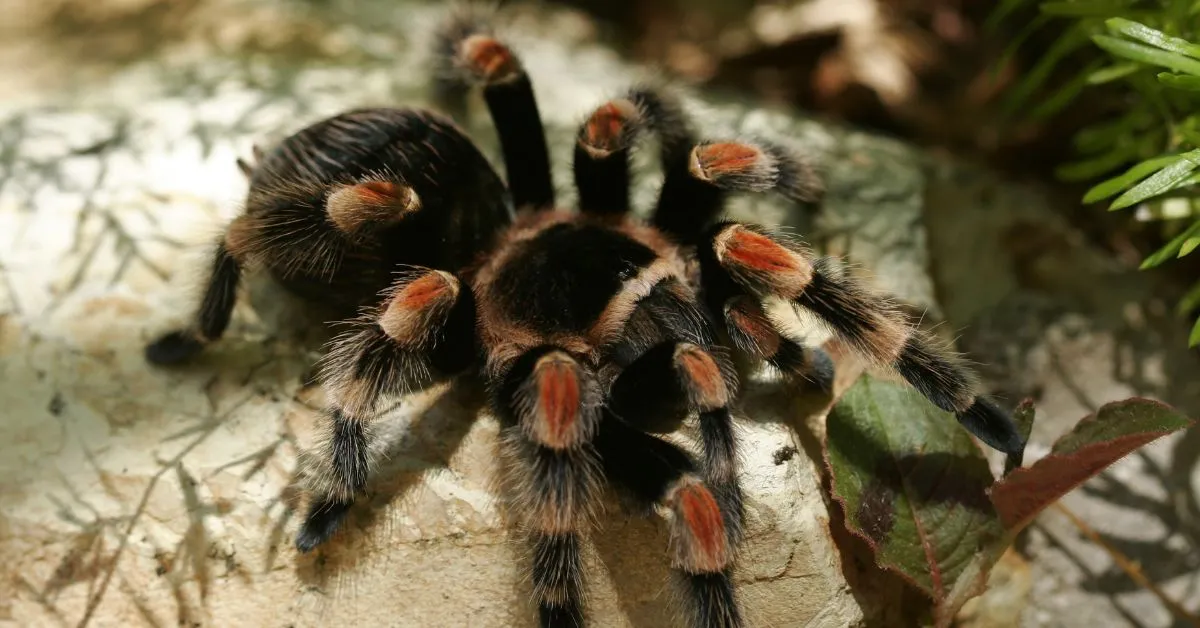
In the case of the Red Knee Tarantula, the scientific name is Brachypelma hamorii. The genus, Brachypelma, is derived from the Greek words ‘brachy,’ meaning short, and ‘pelma,’ meaning sole of the foot, referring to the short tarsi (feet) of these tarantulas. The species name, hamorii, honors the American arachnologist F. Josef Hamor. The genus provides a broader classification grouping related species, while the species name identifies a specific type within that genus. This naming structure helps to show evolutionary relationships and provides a framework for organizing the biodiversity of life.
Detailed Look at the Scientific Name: Brachypelma hamorii
The scientific name Brachypelma hamorii accurately identifies the Mexican Red Knee Tarantula. The genus Brachypelma groups several New World tarantulas known for their striking colors and relatively docile nature. The species name hamorii specifically denotes this particular species. Understanding the origin and meaning of this scientific name enhances one’s knowledge of the tarantula’s classification and characteristics. This standardized nomenclature is essential for clear communication in scientific research and among tarantula enthusiasts. The scientific name also assists in distinguishing the Red Knee Tarantula from other closely related species, emphasizing its uniqueness.
Historical Context of the Name
The history of the scientific naming of the Red Knee Tarantula is rooted in the study and classification of tarantulas by scientists around the world. The original classification of this tarantula, and its subsequent revisions, have been influenced by the evolving understanding of spider taxonomy. Initially, the species was classified under different genera, reflecting the ongoing scientific debates and advancements in the field. The establishment of Brachypelma hamorii as the accepted scientific name is a product of taxonomic research and the efforts of arachnologists to accurately classify and identify tarantulas. The name honors F. Josef Hamor, a notable figure in the study of arachnids.
Common Misconceptions About the Name
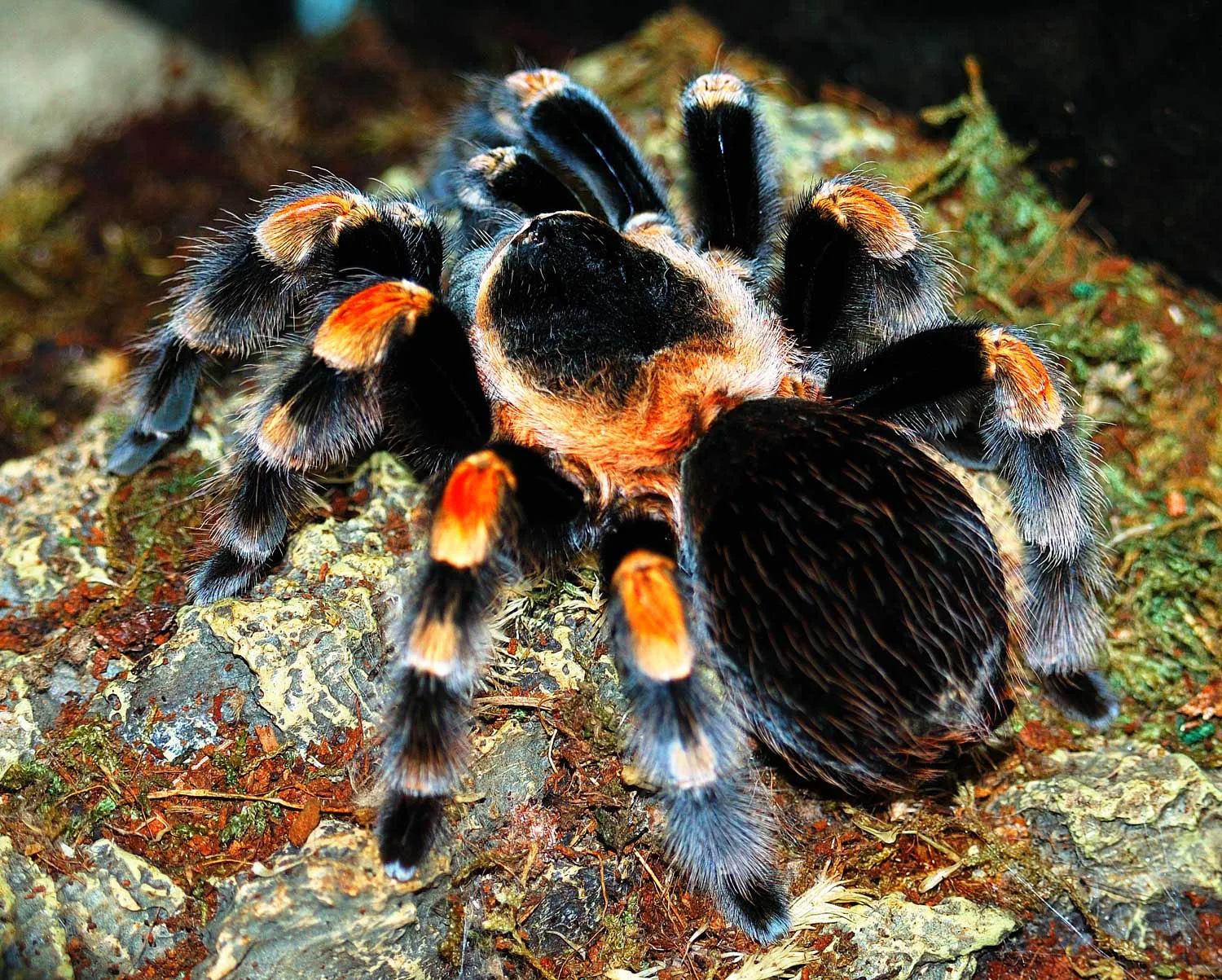
Several misconceptions often surround the scientific name of the Red Knee Tarantula. One common myth is that the scientific name changes frequently. While taxonomic revisions occur, the name Brachypelma hamorii is currently widely accepted. Another misconception is that the scientific name is merely an academic exercise. In reality, it provides a universal identification tool and aids in understanding the relationships between different species. Finally, there’s a misunderstanding about the importance of the scientific name in relation to common names. While common names are helpful, they can be confusing because they may vary by location. Scientific names provide a standardized language for scientific discussion.
The Importance of Knowing the Scientific Name
Knowing the scientific name of the Red Knee Tarantula is crucial for several reasons. It ensures that you are correctly identifying the species, avoiding any confusion with similar-looking tarantulas. When communicating with other tarantula keepers or scientists, using the scientific name eliminates ambiguity. It provides access to accurate information about the species, as scientific literature and resources will use this name. Furthermore, it facilitates informed discussions about care, breeding, and conservation. It also aids in understanding the tarantula’s evolutionary relationships and its place in the web of life.
Why Use Scientific Names
Scientific names serve several vital purposes in the biological sciences. They provide a universal language for discussing organisms, transcending language barriers. They enable scientists to share data and research without confusion about which species is being discussed. They allow for the correct classification of organisms and aid in understanding their evolutionary relationships. Additionally, scientific names promote accuracy in conservation efforts, such as when tracking populations or developing breeding programs. They also allow for easy access to a wealth of information about a particular species, as research papers, databases, and other resources all use the scientific name for identification.
Benefits of Accurate Identification
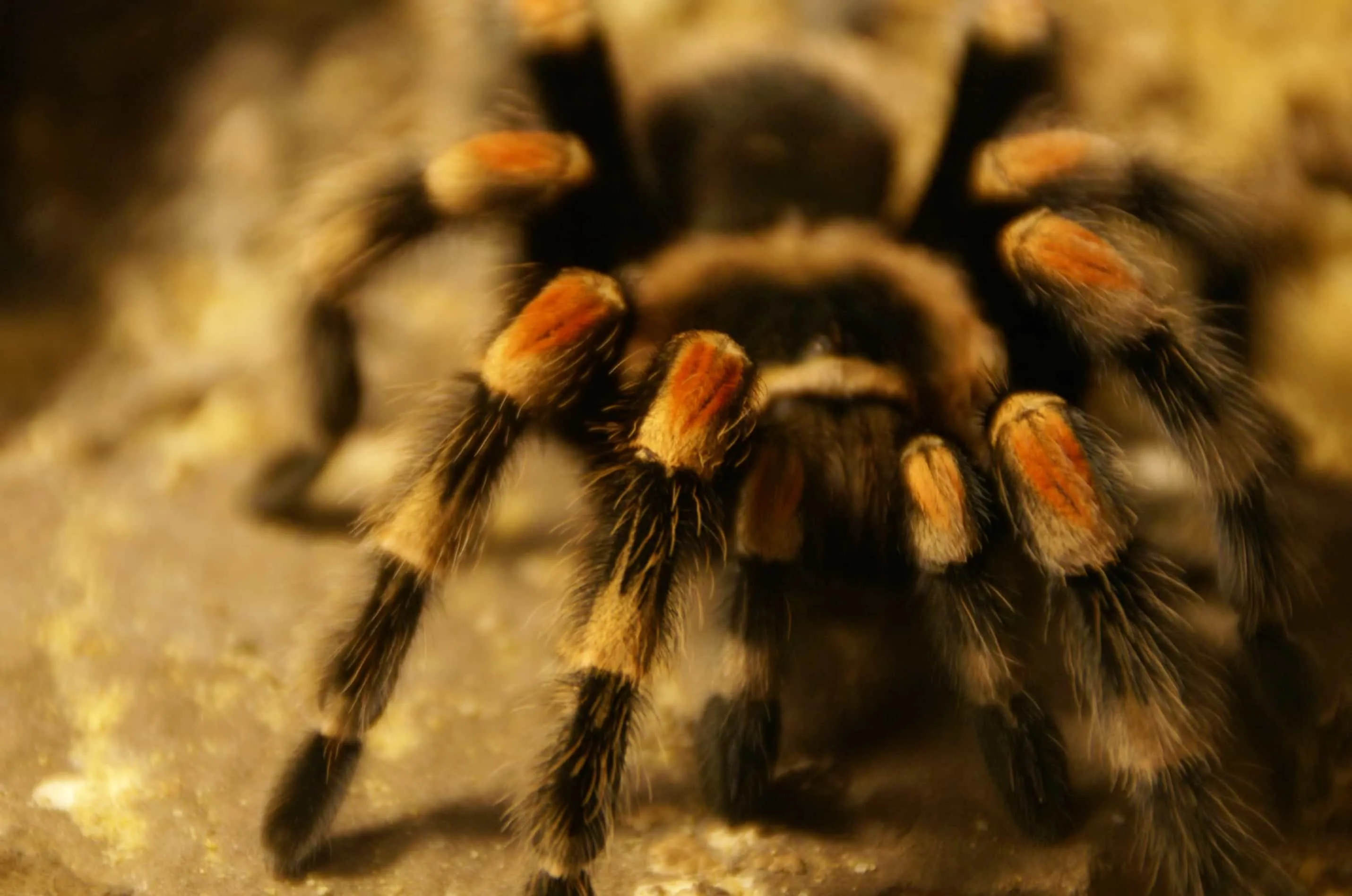
Accurate identification, facilitated by knowing the scientific name, yields numerous benefits for Red Knee Tarantula keepers and researchers. It ensures that care instructions and environmental requirements are appropriate for the specific species, promoting the tarantula’s health and longevity. It reduces the risk of crossbreeding with other species, which could result in hybrid offspring. In research settings, precise identification is crucial for valid scientific studies, such as studies on behavior, growth, or conservation. For enthusiasts, it offers a deeper appreciation for the spider, fostering a more informed and responsible approach to tarantula keeping.
Caring for a Red Knee Tarantula
Proper care is essential for the health and well-being of a Red Knee Tarantula. This includes providing a suitable enclosure, appropriate temperature and humidity levels, a varied diet, and a safe environment. Red Knee Tarantulas thrive in terrestrial habitats, so their enclosure should be wider than it is tall. Regular monitoring for any signs of illness or stress is also crucial. Adequate care will help the tarantula live a long and healthy life. It is also important to provide opportunities for enrichment, such as hiding places and substrate suitable for burrowing. Consistent care and attention can help ensure a positive experience of tarantula keeping.
Proper Enclosure Setup
The enclosure should be appropriately sized for the tarantula, with enough space for it to move around and create a burrow if desired. A secure lid is essential to prevent escape. The substrate should be deep enough for burrowing, a mix of coconut fiber, peat moss, and vermiculite works well. Provide a water dish and a hide, such as a piece of cork bark. Ensure the enclosure is placed away from direct sunlight and drafts. Regular cleaning and maintenance are necessary to maintain a healthy environment. The proper enclosure setup is important for your tarantula’s health and happiness.
Feeding and Diet
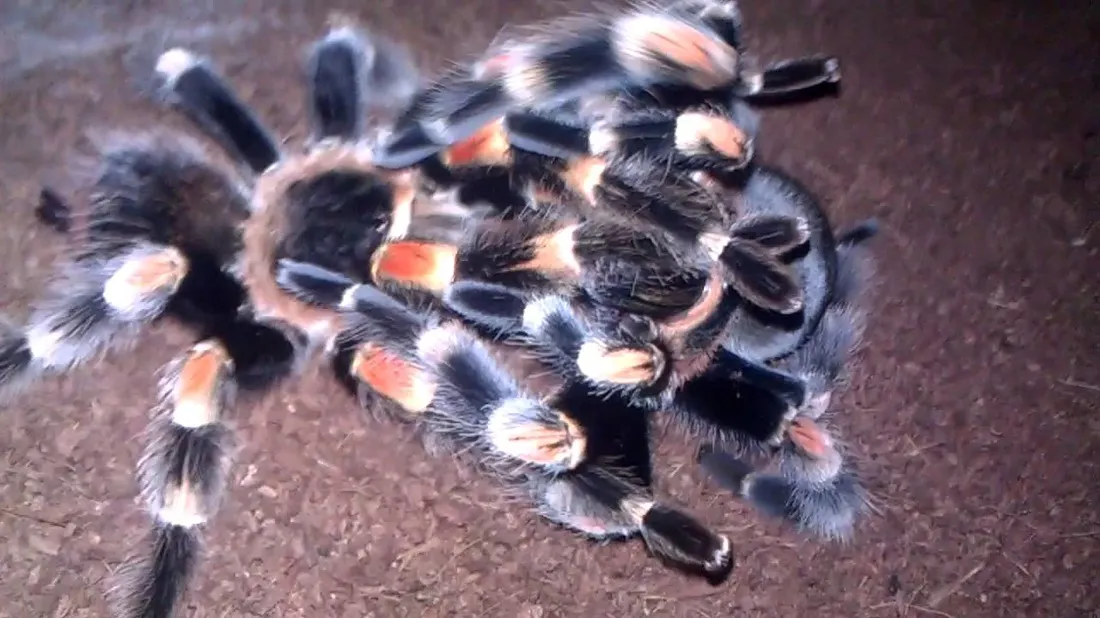
Red Knee Tarantulas primarily feed on insects, such as crickets, roaches, and mealworms. The size of the prey should be appropriate for the tarantula’s size, ensuring the spider can easily capture and consume it. Offer food a few times a week, and remove any uneaten prey to prevent stress or potential harm to the tarantula. Provide a shallow water dish with fresh, clean water at all times. Regular feeding and a balanced diet are crucial for the tarantula’s growth, molting, and overall health. It’s also important to vary the diet to provide a range of nutrients.
Humidity and Temperature Requirements
The ideal temperature range for a Red Knee Tarantula is between 75°F and 85°F (24°C and 29°C). Use a heat mat or a low-wattage heat lamp to maintain the temperature, but avoid direct contact with the tarantula. Humidity levels should be between 60% and 70%. Use a hygrometer to monitor humidity, and mist the enclosure occasionally to maintain the appropriate level. Adequate ventilation is essential to prevent mold growth. Maintaining the correct temperature and humidity levels ensures a healthy and comfortable environment for the tarantula, facilitating proper molting and overall well-being.
Common Health Issues and Solutions
Common health issues in Red Knee Tarantulas can include dehydration, parasitic infections, and injuries. Dehydration can be prevented by providing a water dish. Parasites can be avoided by feeding insects from reputable sources. Injuries can occur during molting or due to handling. Regular observation for any signs of illness, such as lethargy, loss of appetite, or unusual behaviors, is crucial. Consult with a veterinarian specializing in exotic animals if you notice any health concerns. Careful husbandry practices and a clean environment are key to preventing many health problems.
Conclusion
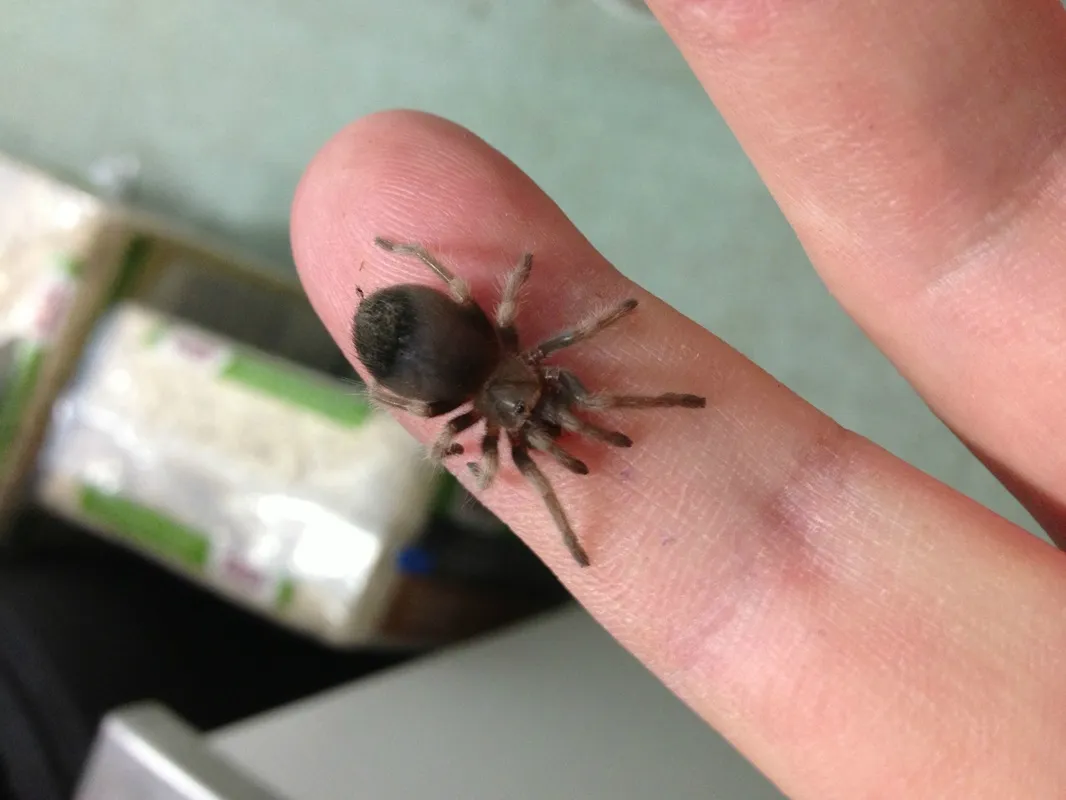
Understanding the scientific name Brachypelma hamorii is a fundamental aspect of appreciating the Mexican Red Knee Tarantula. It allows for accurate identification, facilitates communication, and enhances the overall knowledge of this captivating species. By knowing the scientific name and practicing appropriate care, enthusiasts can ensure the well-being of these fascinating creatures and contribute to their conservation. Embracing the details of the scientific name opens the door to a deeper understanding of the Red Knee Tarantula and the captivating world of arachnids.
